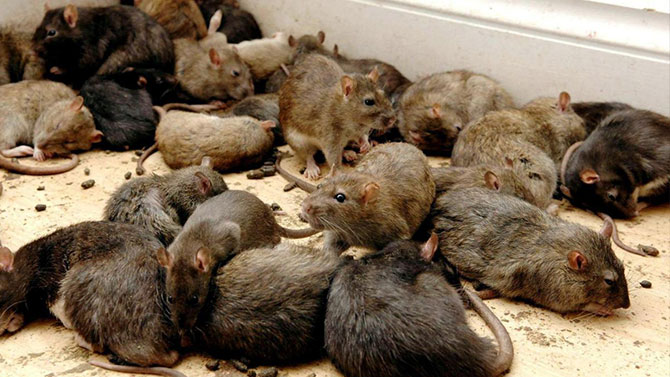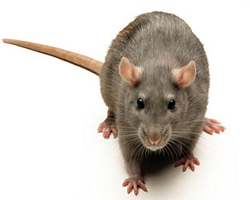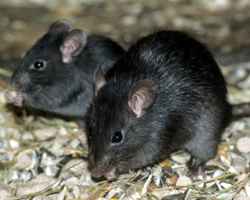
Information about rats & mice
Rats transmit diseases
Have you ever heard scurrying and chewing in your roof? The opinion of many property owners is that there are possums up there having a party. Although Possums can be a problem, it is usually something more sinister. Rodents will start to infest buildings and structures during autumn and winter is the breeding seasons and once established they can breed very quickly. One female can produce up to 15 offspring twice a year. They are responsible for chewing power wires and air conditioning ducting. They excrete everywhere and transmit diseases.
Rat diseases transmitted to humans are by a variety of means. Contamination of food or utensils with rodent urine or faeces, which can cause salmonella bacteria as well as mild meningitis, weil’s disease, infectious jaundice and tapeworm.
Under the State Government’s Public Health Regulation 2005 and Council’s Local Laws, it is an offence to allow your property to harbour rats and mice because of overgrown vegetation or accumulation of rubbish. Clean-up costs and penalties may apply to residents who don’t maintain their properties to prevent harbouring vermin. These costs will be added to the property owner’s rates notice.
There are three main species of introduced rats and mice that are considered pests:
Norway Rat

Characteristics:
The Norway rat can also be known as the sewer rat or the brown rat. They are the largest of our pest rodents species with a thicker body, the tail is shorter than the body a blunt nose section and distinctive small ears. The Norway rat are prolific breeders they can breed up to 10 offspring 4 – 5 times a year. The fur is a reddish brown colour and the life span of about 12 months.
Habits:
As the name suggests, the sewer rat or water rats are excellent swimmers they can nest indoors or outdoors their food consists o f meat cereals fish and whatever they can scrounge out of garbage.
Roof Rat

Characteristics:
The Roof rat or Black rat as it is otherwise known is smaller in size with large ears and a longer tail the eyes protrude out from the face and they are a dark grey black in colour. They can also breed quite quickly producing 20 – 25 off spring per year and they are very agile climbers.
Habits:
Roof rats are common in roof voids as they like high places and are often seen running along fence tops and power cables. their food consists mainly of fruit, Vegetables, nuts and grains.
House Mouse

Characteristics:
The Roof rat or Black rat as it is otherwise known is smaller in size with large ears and a longer tail the eyes protrude out from the face and they are a dark grey black in colour. They can also breed quite quickly producing 20 – 25 off spring per year and they are very agile climbers.
Habits:
Roof rats are common in roof voids as they like high places and are often seen running along fence tops and power cables. their food consists mainly of fruit, Vegetables, nuts and grains.
Method of Treatment for Ants:
An inspection of the building and property will have to be carried out to confirm your noises are in fact Rodents. We look for harborage and tracking areas. Special Rodenticide baits are then set in containers and placed in strategic areas to maximize control and be in place for further infestations.
At All Bugs our licensed technicians can assist you with a flexible, tailored solution to suit your individual needs we can prevent all pests from becoming a problem in your home or workplace. Please contact us to help you maintain an environment free of pests. Please call (07)3324 0111 to make an appointment.

